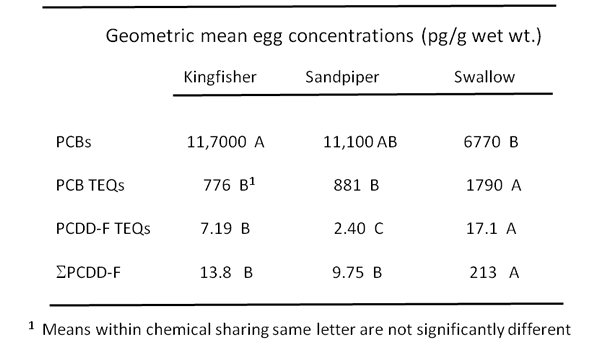Wildlife Toxicology
Study site locations: New York - Hudson River - Multiple species
|
||
|
 |
|
Custer, C.M., T.W. Custer, and P.M. Dummer. 2010. Patterns of organic contaminants in eggs of an insectivorous, omnivorous, and piscivorous bird nesting on the Hudson River, NY, USA. Environ. Toxicol. Chem. 29:2286-2296. "Any opinions presented are those of the principal investigators and not the position of the United States or the Hudson River Trustees."
Page Last Modified: April 3, 2018



